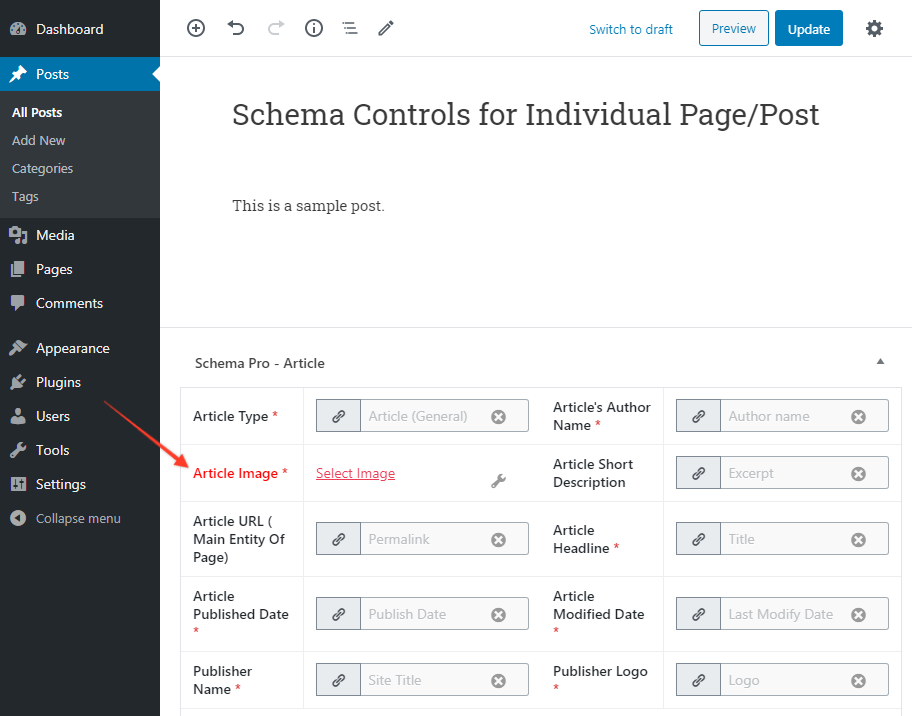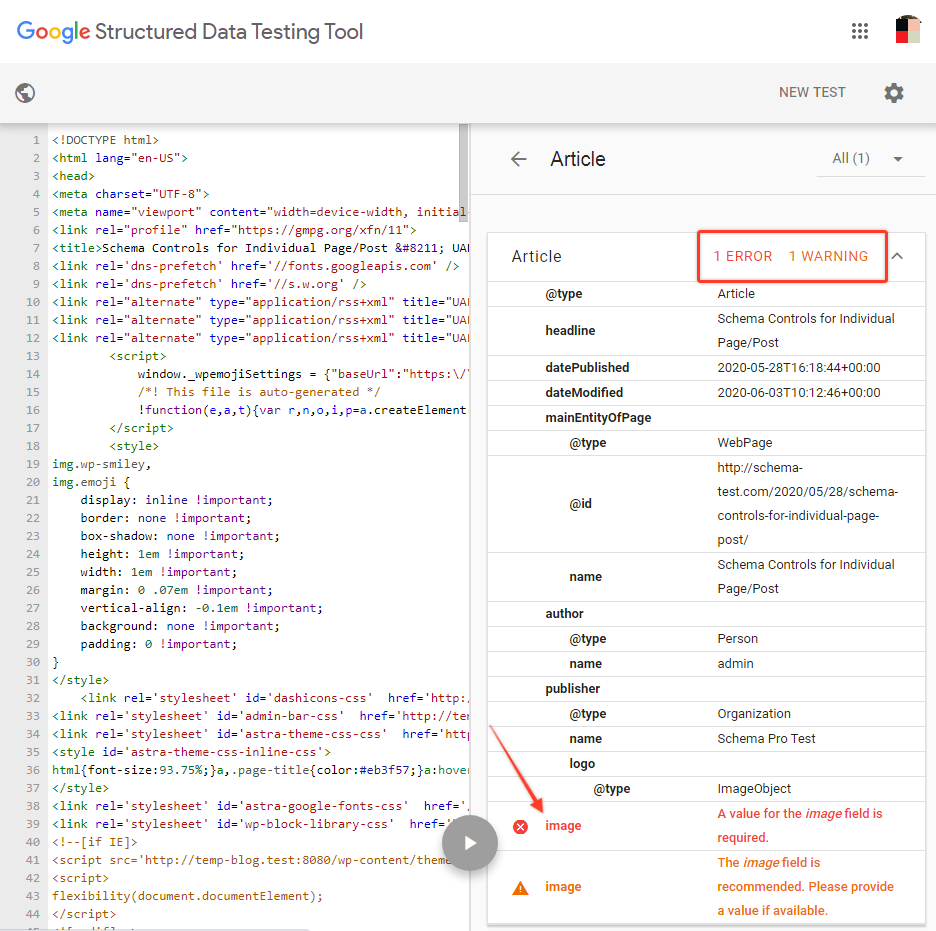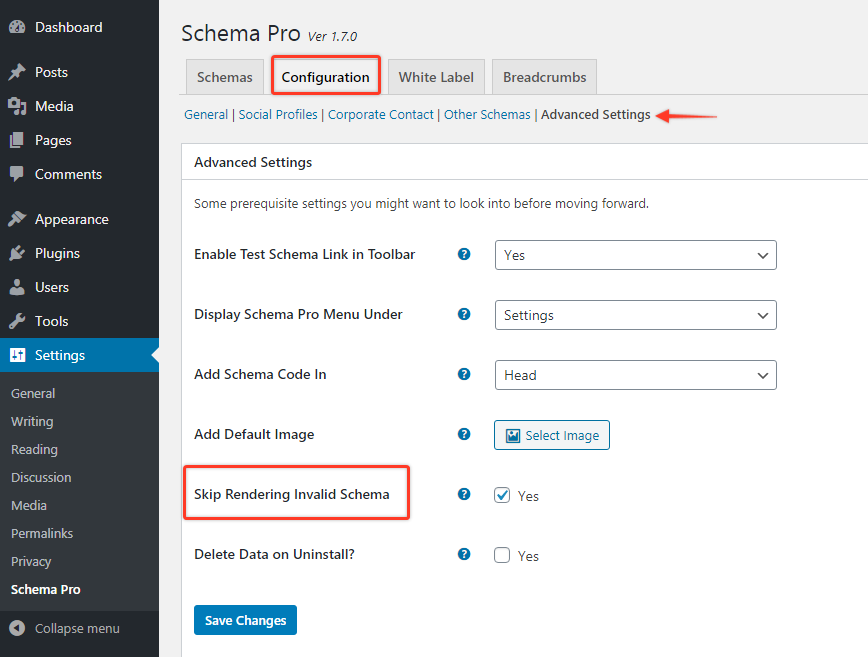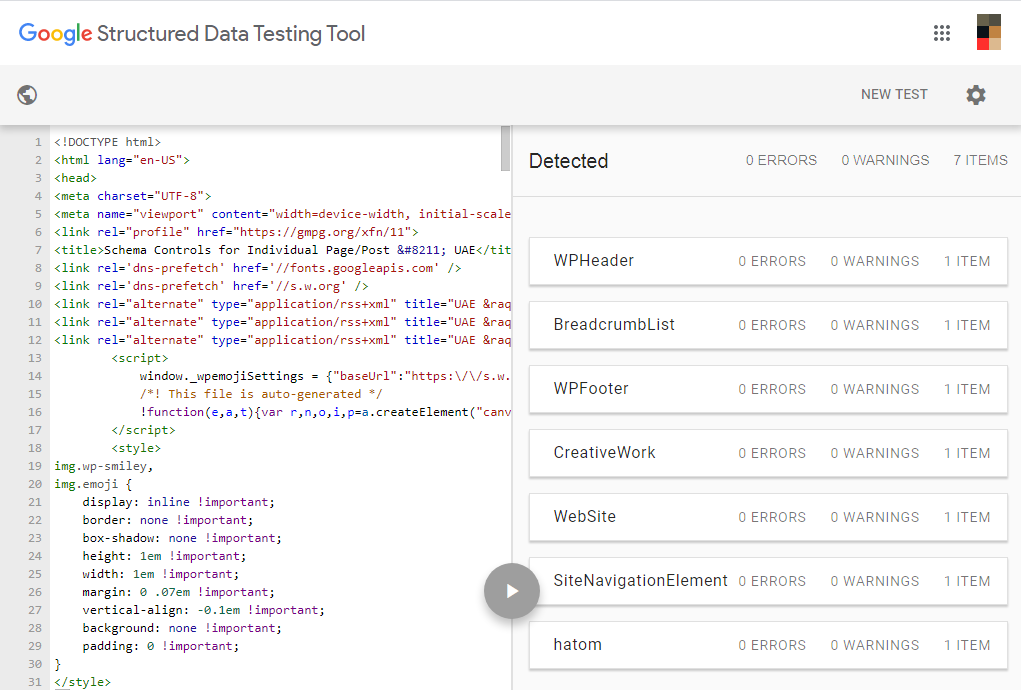- Add an Extra Field for a Schema Type
- Enable/Disable Schema Markup
- Add Ratings Using Shortcode
- Disable a Specific Schema Markup
- Add Schema Markup on Subcategories
- Disable the White Label Settings
- Disable Corporate Contact Schema
- Remove Home List Item from Breadcrumblist Schema
- Remove Shop Item Link on Product Page
- Test a Schema Snippet
- Mapping Your Schema Fields
- Add an Extra Field for a Schema Type
- How to Use the Schema Pro plugin?
- All-in-one Schema Pro plugin
- Map Required fields with Custom Fields
- Create a Custom Fields
- Target Specific Areas of the Website
- Enable/Disable Schema Markup
- Add Ratings Using Shortcode
- Implement Breadcrumbs
- Disable Schema Markup on AMP Pages/Posts
- Plugin Settings for Schema Pro
- Restrict Schema Pro Settings for Specific User Roles
- Remove Home List Item from Breadcrumblist Schema
- Delete Your Schema Data
- Regenerate Schema
- Configure Schema on a Single Page/Post
- Skip Rendering Invalid Schema
- Handle Errors & Warnings in a Testing Tool
- Configure WooCommerce
- Repeater Fields Controls on Pages/Posts
- WooCommerce Review Field Schema Markup
- Custom Schema Markup
- Compatibility with External plugins
- Rollback Schema Pro Plugin to Previous Version
- How to White Label Schema Pro
- Important Update: Sitelinks Search Box Deprecation
- Knowledge Graph with Schema Pro
- Configuring WooCommerce with Schema Pro Plugin
- How to Add a Schema markup for an Article on your website?
- Difference Between the Free and Pro Plugin?
- How to map fields with custom fields from third party plugins?
- Accept User Ratings from Users
- Update Schema Pro
- Register Your Copy of Schema Pro
- Organization Type in the Setup Wizard
- Schema Pro Setup Wizard
- Getting Started With Schema Pro
- How To Install Schema Pro Plugin
- Schema Markup for an Event page
- Schema Markup for a Review page
- Schema Markup for a Local Business Page
- Schema Markup for a Service Page
- Schema Markup for a Product Page
- Schema Markup for a Course page
- Schema Markup for a Recipe Page
- Schema Markup for a Person/ About Page
- Schema Markup for a Job Posting Page
- Schema Markup for a Video Object
Skip Rendering Invalid Schema
With Schema Pro version 2.0 and greater you get a option to skip rendering invalid schema.
What is invalid schema?
In every schema type there are few required fields that are marked with asterisk sign (*).
Schema Pro version 2.0, makes all schema fields available on single pages and posts. Editing single page/post you will see all schema fields available for editing.
You will observe a few of the fields with an asterisk sign (*). If you have not set any value for such required fields they will appear in RED color (as shown in the following screenshot).
When required fields are not filled they generate invalid schema.

How to test if invalid schema is added?
As shown in the above screenshot, the ‘Article Image’ field is marked with an asterisk sign (*). This field does not have any value and hence marked with red color.
If you test this page with Google’s Structured Data Testing Tool you will observe error for this.

You will see such errors for all required fields those do not have any value set.
How the option ‘Skip Rendering Invalid Schema’ will help?
Google guidelines says –
Specify all required properties for your rich result type. Items that are missing required properties are not eligible for rich results.
Source – General structured data guidelines
So having error in schema markup can affect generating rich snippet.
The option ‘Skip Rendering Invalid Schema’ will not generate and render schema that has errors.
So when you enable this setting under Settings > Schema Pro > Configuration > Advanced Settings, schema markup for the pages/posts where the invalid schema is present will not be rendered.

In our example, enabling option will skip rendering Article schema on a the page. And the Google’s Structured Data Testing Tool will look like –

Note: Schema types those have required field empty will be skipped only. Other schemas on the same page will be rendered successfully.
We don't respond to the article feedback, we use it to improve our support content.